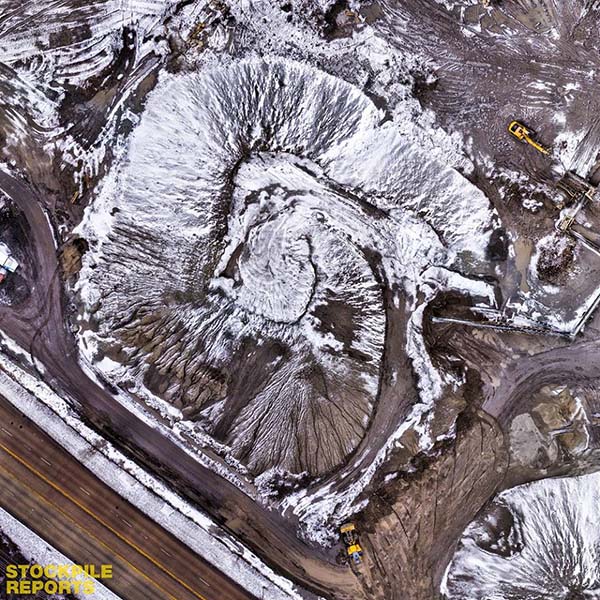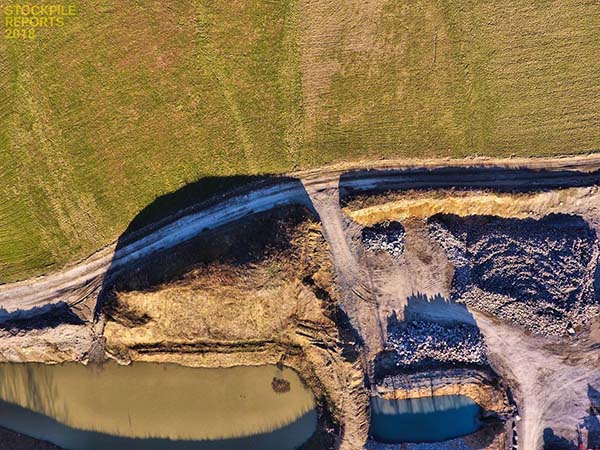Inefficiencies in the construction industry have generated headlines in recent years, with McKinsey & Company determining that large construction projects typically take 20 percent longer to finish than scheduled and are up to 80 percent over budget. It’s one of the reasons that stakeholders across construction organizations of all sizes are focused on becoming more efficient in even the smallest manner.
The practicalities of creating these efficiencies often means adopting or integrating a new piece of hardware or software, since technology represents a compelling way to drive efficiencies in the construction industry. The challenge is that the construction industry is not known for its innovative use of technology and could run into some serious challenges through the rapid deployment of new tech, even creating additional inefficiencies. This is why construction companies need to treat technology as a real business strategy that requires the creation of a digital vision to point the company in the right direction. Doing so necessitates the development of a digital roadmap to ensure a construction company is investing in the right, focused technologies to achieve their vision.The concept of developing a technology roadmap certainly isn’t new, but the pace of change makes answering questions that are specifically related to how technology is going to be used in a company more important than ever. It’s part of the reason that Sappington has had such success when it comes to helping construction companies understand how they should (or shouldn’t) approach the adoption and integration of new technologies. Creating a Vision and RoadmapSappington has helped companies like Microsoft and IBM work through challenging transitions that saw them move away from a proven business model. After seeing the study from McKinsey & Company that also referenced how construction was among the least digitized of all the industries that had been surveyed, Sappington Founder and CEO Tim Goggin knew he’d found a market where he could provide value. That was especially apparent in light of a 2016 survey found that the majority of construction companies spend less than 1% of their annual sales volume on IT. A 2017 survey showed that this trend is moving in the right direction as conversations about technology and IT transition from being focused on laptops and helpdesk tickets to something much bigger.“We’re dealing with an industry that, historically speaking, has spent very little on technology investments,” Goggin told Commercial UAV News. “That’s changing in a big way, as construction companies are investing more in technology, but the challenge is that many construction organizations still think of technology as a department, and that's often a very small department.”Getting a construction company to think differently about their approach to technology can be a difficult proposition, but it’s a change that can be tied to specific value propositions. For a company like Stockpiles Reports, their value is in optimizing a materials yard, especially for companies that are selling those materials to customers. Anyone with these kinds of assets on hand can derive an incredible amount of value from knowing what’s going on with those piles at any given moment in order to recognize when time and resources are not being utilized. Providing better visibility across material yards is a specific example of what a digital vision can look like.This kind of value all comes down to working with a company to develop a vision for how they want to use technology. Common digital visions in the construction industry are enabling better visibility across vast operations, or to improve the productivity of key staff members. For some advanced construction companies, that could mean reimagining its customer experience. It could even mean creating new business models or opportunities using technology, such as modular building construction.Once a digital vision is set, the next step is to create a digital roadmap that lists and priorities the technology investments required to achieve the vision. A construction materials company will prioritize investment in drone technology that is set to addresses and create a number of business benefits. These are the details that end up defining a company’s roadmap in terms of where they need to invest or commit to a given technology development. It’s about more than a single piece of technology though, with much wider ramifications.Because the rate of change is so fast, the effective adoption and integration of a new solution can represent a competitive advantage. Technology can be a key asset when it comes to advancing objectives and transforming an organization, but that can only happen when the right people see, understand and embrace these concepts.
Creating a Vision and RoadmapSappington has helped companies like Microsoft and IBM work through challenging transitions that saw them move away from a proven business model. After seeing the study from McKinsey & Company that also referenced how construction was among the least digitized of all the industries that had been surveyed, Sappington Founder and CEO Tim Goggin knew he’d found a market where he could provide value. That was especially apparent in light of a 2016 survey found that the majority of construction companies spend less than 1% of their annual sales volume on IT. A 2017 survey showed that this trend is moving in the right direction as conversations about technology and IT transition from being focused on laptops and helpdesk tickets to something much bigger.“We’re dealing with an industry that, historically speaking, has spent very little on technology investments,” Goggin told Commercial UAV News. “That’s changing in a big way, as construction companies are investing more in technology, but the challenge is that many construction organizations still think of technology as a department, and that's often a very small department.”Getting a construction company to think differently about their approach to technology can be a difficult proposition, but it’s a change that can be tied to specific value propositions. For a company like Stockpiles Reports, their value is in optimizing a materials yard, especially for companies that are selling those materials to customers. Anyone with these kinds of assets on hand can derive an incredible amount of value from knowing what’s going on with those piles at any given moment in order to recognize when time and resources are not being utilized. Providing better visibility across material yards is a specific example of what a digital vision can look like.This kind of value all comes down to working with a company to develop a vision for how they want to use technology. Common digital visions in the construction industry are enabling better visibility across vast operations, or to improve the productivity of key staff members. For some advanced construction companies, that could mean reimagining its customer experience. It could even mean creating new business models or opportunities using technology, such as modular building construction.Once a digital vision is set, the next step is to create a digital roadmap that lists and priorities the technology investments required to achieve the vision. A construction materials company will prioritize investment in drone technology that is set to addresses and create a number of business benefits. These are the details that end up defining a company’s roadmap in terms of where they need to invest or commit to a given technology development. It’s about more than a single piece of technology though, with much wider ramifications.Because the rate of change is so fast, the effective adoption and integration of a new solution can represent a competitive advantage. Technology can be a key asset when it comes to advancing objectives and transforming an organization, but that can only happen when the right people see, understand and embrace these concepts.  It Starts at the Top We’ve talked about the challenges that come up when it comes to the first steps that need to be taken with drone adoption, but the reality is that the direction and impetus for technology integration of almost any kind needs to come from the very top. The senior most leaders in the company need to take an active role in having a strategic conversation about technology. When that doesn’t happen, organizations end up dealing with a variety of challenges.“If the senior leadership does not take an active role around the creation of a digital vision and road map or how they should be approaching adoption, you’ll often see fragmented tech decision making and implementations,” Goggin said. “That can mean middle management or people without the ability to define what integration should look like trying to fill in the gaps and make decisions on their own which isn't something that works long term. Technology needs to be an initiative that is just as important as safety and environmental and all the other top initiatives.”Starting these conversations at the top is one of the reasons that Goggin has spent a lot of time with the CFO’s of construction companies, who are often responsible for technology decisions and execution. Some CFOs feel uncomfortable because today technology advancements and investments are becoming more complex and prevalent, especially when compared to the past when this kind of adoption was mostly focused on back-office accounting systems or laptops.Regardless of their title or position, many construction company leaders feel they're under-resourced or they don't have all the info they need to make informed decisions. It’s a situation that should compel CFOs or business leaders to ask what would be the appropriate measurement of metrics for a particular investment. What kind of value can be created when that visibility shifts from being annual to daily? What kind of value can be enabled when there’s a set process around gathering this info, rather than the approach of whoever happens to be working that day? What kind of additional resources would they need to effectively adopt a piece of technology?These are questions that every company is going to answer differently, but all of them will be related to creating value. Answers will specifically define how the adoption and integration of drone technology should work for a specific workflow or organization, which is something we’ve explored in much more detail with Sappington.
It Starts at the Top We’ve talked about the challenges that come up when it comes to the first steps that need to be taken with drone adoption, but the reality is that the direction and impetus for technology integration of almost any kind needs to come from the very top. The senior most leaders in the company need to take an active role in having a strategic conversation about technology. When that doesn’t happen, organizations end up dealing with a variety of challenges.“If the senior leadership does not take an active role around the creation of a digital vision and road map or how they should be approaching adoption, you’ll often see fragmented tech decision making and implementations,” Goggin said. “That can mean middle management or people without the ability to define what integration should look like trying to fill in the gaps and make decisions on their own which isn't something that works long term. Technology needs to be an initiative that is just as important as safety and environmental and all the other top initiatives.”Starting these conversations at the top is one of the reasons that Goggin has spent a lot of time with the CFO’s of construction companies, who are often responsible for technology decisions and execution. Some CFOs feel uncomfortable because today technology advancements and investments are becoming more complex and prevalent, especially when compared to the past when this kind of adoption was mostly focused on back-office accounting systems or laptops.Regardless of their title or position, many construction company leaders feel they're under-resourced or they don't have all the info they need to make informed decisions. It’s a situation that should compel CFOs or business leaders to ask what would be the appropriate measurement of metrics for a particular investment. What kind of value can be created when that visibility shifts from being annual to daily? What kind of value can be enabled when there’s a set process around gathering this info, rather than the approach of whoever happens to be working that day? What kind of additional resources would they need to effectively adopt a piece of technology?These are questions that every company is going to answer differently, but all of them will be related to creating value. Answers will specifically define how the adoption and integration of drone technology should work for a specific workflow or organization, which is something we’ve explored in much more detail with Sappington. 















Comments